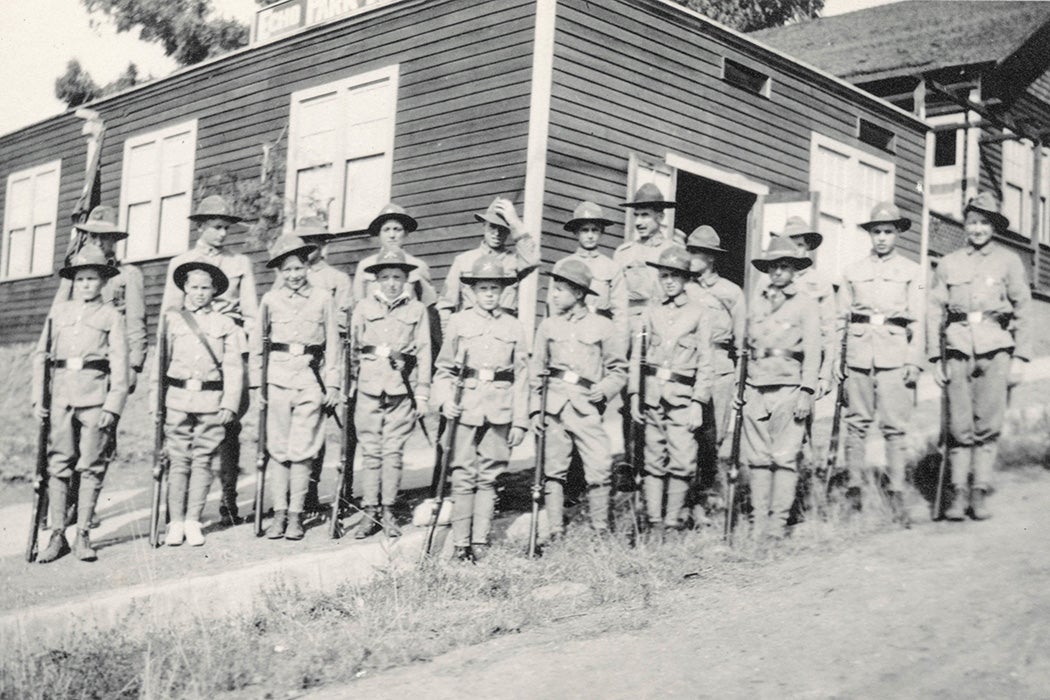It’s a tradition familiar to generations of boys in the United States—learning to aim and shoot a .22 caliber rifle as part of a local Boy Scout troop. But as American studies scholar Jay Mechling writes, it wasn’t always obvious that handling a gun should go side by side with building a fire or using a compass.
Many rural boys in the early twentieth century learned to hunt with rifles as a matter of course. But, Mechling writes, the lawyers, businessmen, and youth workers who founded the Boy Scouts of America in 1910 weren’t primarily concerned with them. They focused on city kids—many of them part of immigrant or migrant families.
“The movement was for the boys who had paid the price of urban civilization and who were far removed from the wilderness experience that fostered manly virtues like self-reliance and physical fitness,” Mechling writes.
Some of the BSA’s founders were antimilitarists, or even pacifists. The group actually distinguished itself from other scouting groups popping up at the time by shying away from military imagery and activities. That stance seemed especially wise after one member of the American Boy Scouts accidentally shot and killed another child. BSA’s first official handbook did include a marksmanship merit badge, but it wasn’t a big focus.
To gun manufacturers, though, scouts looked like a promising market. Mechling writes that that first BSA manual featured an ad from Remington promoting the value of shooting for “quickness of eye, steady judgement [and] self-confidence.” Around the same time, the United States Cartridge Company came out with “Boy Scout Cartridges.” Its ads featured scouts camping, fishing, and target shooting.
Like the gun makers, the National Rifle Association viewed the BSA as a vehicle for its message. In the 1930s and ’40s, it worked with local Boy Scout camps to put rifle ranges on site. It created similar partnerships with the Girl Scouts of America, YMCA chapters, Sunday schools, and school-sponsored Junior Rifle Clubs.
Mechling argues that the 1950s brought a new crisis for American manhood. Men increasingly worked in white-collar jobs, while Cold War rhetoric highlighted the concept of manly strength. Guns were everywhere in the Western movies that played on television. This was also a high point for the BSA, with its focus on patriotism and healthy, disciplined masculinity.
The 1953 version of the organization’s marksmanship badge pamphlet emphasizes careful self-control and physical coordination. But, in keeping with its longstanding ambivalent relationship with paramilitary hypermasculinity, it suggests these are not just qualities for boys and men.
Weekly Newsletter
“As a matter of fact,” the pamphlet says, “Rifle shooting is one of those all too rare sports which father and son, mother and daughter can enjoy together and with an equal chance of success.”
Over the decades that followed, events from the assassination of John F. Kennedy to the school shootings of the twenty-first century created controversy around mixing kids and guns. But the place of guns in the Boy Scouts of America remains secure.
Support JSTOR Daily! Join our new membership program on Patreon today.







